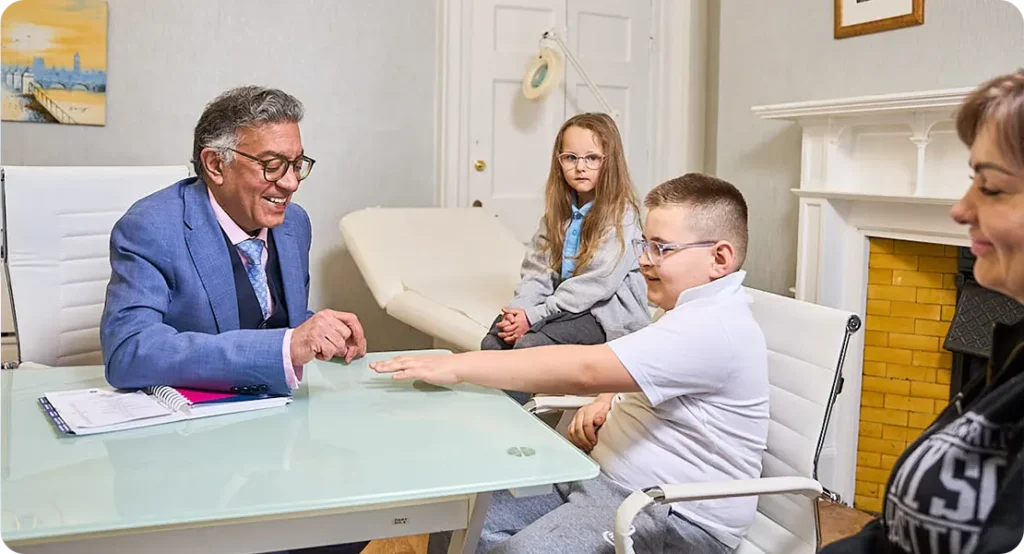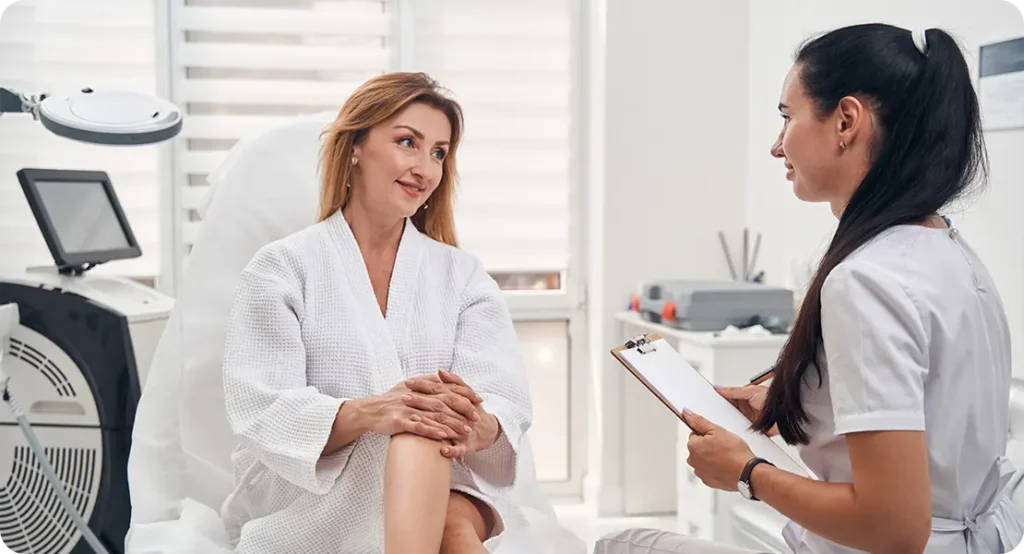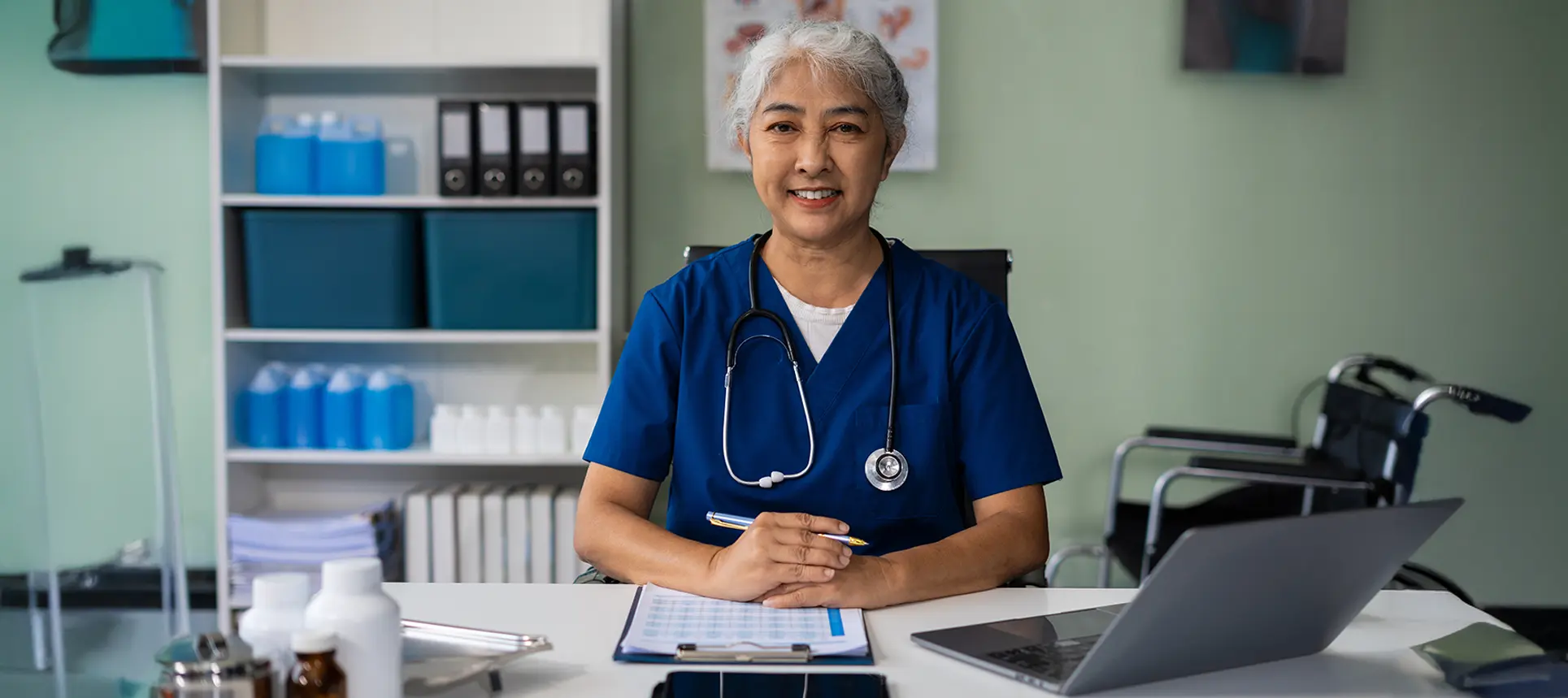If you’ve ever walked out of a dermatologist’s office feeling unsure, you’re not alone. Whether it’s a complex skin condition, a recommendation for an invasive treatment, or simply a gut feeling that something doesn’t add up, seeking a second opinion isn’t just your right—it can be a smart move for your health.
Skin issues can be tricky. They often mimic one another, evolve over time, and respond differently to treatments. With over 3,000 skin conditions recognised by medical professionals, it’s no wonder that even experienced dermatologists sometimes offer varying interpretations. That’s where second opinions come in. They provide clarity, reassurance, and often lead to better outcomes.
In this article, we’ll walk you through the reasons to seek a second opinion, when it’s most helpful, and how to do it without stepping on any toes. It’s your health, your skin, and your peace of mind—so let’s explore how to protect it properly.
When Should You Consider a Second Opinion?
1. When Your Diagnosis Is Unclear or Rare
Not every skin condition fits neatly into a textbook definition. Sometimes, you might be given a “tentative” diagnosis, or the dermatologist might use phrases like “we’ll monitor it” or “let’s try this and see.” That’s not necessarily a bad approach, but if you’re left uncertain, it’s worth getting another view.
Rare skin conditions, such as pemphigus vulgaris or cutaneous T-cell lymphoma, are often misdiagnosed initially as more common ailments. In these cases, a second opinion can help catch something serious earlier—or simply give you more confidence in the original diagnosis.
You’re not questioning the expertise of your first doctor; you’re just adding another expert to the equation.
2. If You’re Facing a Long-Term or Life-Altering Treatment
Let’s say your dermatologist recommends immunosuppressants, long-term antibiotics, laser treatment, or even surgery. These aren’t decisions to take lightly. They can affect your overall health, have significant side effects, and often come with hefty costs or recovery times.
Before starting any intensive or permanent treatment plan, getting a second opinion can provide you with more options. You might learn about newer treatments, different approaches, or even be told that waiting or watching is safe.
This is especially true for conditions like severe acne, psoriasis, or skin cancers—where treatment pathways can vary dramatically between clinics and specialists.
3. If Your Symptoms Persist Despite Treatment
You’ve followed the instructions, used the creams, taken the tablets—and still no improvement. In fact, sometimes things might get worse.
This is a clear sign that a second opinion could help. A different dermatologist might spot something that was missed, interpret your symptoms in a new way, or recommend advanced diagnostics like a skin biopsy or patch testing.
Sometimes, it’s not about a wrong diagnosis—it’s just about finding the right fit for your skin’s unique response.
Why Getting a Second Opinion Matters
1. It Reduces Diagnostic Errors
Studies have shown that second opinions in dermatology can significantly reduce diagnostic errors. Even skilled professionals can miss subtle clues or interpret test results differently.

Dermatology is a visual field, and interpretation plays a big role. Two doctors might look at the same lesion and come to different conclusions. Getting that second set of eyes—especially from someone with a subspecialty in your condition—can make all the difference.
Your skin deserves that level of attention, especially if something doesn’t feel quite right.
2. It Helps You Make Informed Choices
Knowledge is power—especially when it comes to your health. A second opinion gives you a broader view of your condition and the available treatments. You might find that another specialist recommends a less invasive, more affordable, or simply more suitable option for your lifestyle.
You’re then in a better position to weigh the pros and cons, ask better questions, and take control of your own care plan.
Informed decisions often lead to more satisfying outcomes—and less regret down the road.
3. It Offers Peace of Mind
Even if the second dermatologist gives the same diagnosis or treatment plan, that confirmation alone can be reassuring. Knowing that two professionals agree can give you the confidence to move forward without hesitation.
That mental relief is worth its weight in gold—especially if you’ve been feeling anxious, confused, or overwhelmed by your skin issue.
How to Seek a Second Opinion (Without the Awkwardness)
1. Don’t Worry About Offending Your Current Dermatologist
It’s completely natural to feel hesitant about seeking a second opinion, especially if you’ve developed a good relationship with your current dermatologist. Many people worry they’ll come across as distrustful or ungrateful, but this couldn’t be further from the truth. The reality is, second opinions are a routine part of responsible healthcare. Dermatologists, like all medical professionals, understand that patients have the right to seek clarity—especially when dealing with complex, uncertain, or serious skin conditions.
In fact, many dermatologists actively encourage patients to get a second opinion if it means arriving at a more confident and accurate diagnosis. Medicine is rarely an exact science, and even the most experienced practitioners can have differing interpretations. You’re not questioning your dermatologist’s competence—you’re simply taking steps to feel more reassured and informed. It’s no different from checking with another contractor before starting a major renovation or getting financial advice from a second adviser.
If you do choose to inform your dermatologist, you can frame the conversation in a respectful and appreciative way. A statement like, “I’ve really valued your care, but I’d like to speak to another specialist to get a broader perspective,” keeps the tone polite and professional. And remember—if you’d rather not share your decision, that’s your right. Your primary obligation is to your own health, not anyone else’s feelings.
2. Choose the Right Specialist for the Second Opinion
Dermatology covers a wide spectrum of specialities, and it’s important to match the expertise of the second dermatologist to the nature of your skin concern. For example, someone dealing with chronic hives or lupus-related rashes may benefit more from a dermatologist with experience in immunodermatology than from a general practitioner. Similarly, if the issue is a suspicious mole or lesion, a consultant with a background in dermatological surgery or oncology might offer a more targeted analysis.

To find the right fit, it helps to do some research before booking your consultation. You can ask your GP or even your current dermatologist for recommendations, or search online for consultants with recognised expertise in your specific concern. In the UK, the General Medical Council (GMC) register allows you to verify a dermatologist’s credentials and special interests. Don’t be afraid to dig into their professional profiles, published work, or patient feedback—it’s all part of ensuring you’re placing your skin in safe hands.
Choosing the right specialist isn’t just about qualifications; it’s also about communication and approach. Look for someone who takes the time to listen, asks detailed questions, and explains their thoughts clearly. A good second opinion doesn’t just confirm or challenge a diagnosis—it helps you feel empowered, understood, and actively involved in your care. Taking the time to find the right person can make all the difference in how confident you feel moving forward.
3. Bring Your Records and Be Honest
When you book a second opinion, it’s crucial to go into the consultation as prepared as possible. That means gathering your full medical history, including test results, biopsy reports, imaging, photographs, prescription lists, and any notes from previous appointments. These documents help the new dermatologist understand what’s already been tried, what’s worked (or not), and whether anything important might have been overlooked. Having everything at your fingertips saves time and avoids duplication of tests.
But it’s not just about bringing paperwork—it’s also about being open. Try to describe your symptoms in detail, including when they started, what they feel like, how they’ve changed, and how they affect your daily life. Even emotional factors, like how the skin issue is affecting your confidence or mood, can be relevant. The more honest and comprehensive you are, the more accurate and tailored the second opinion will be.
Being clear about your goals also helps. Are you hoping for a different diagnosis? A less aggressive treatment plan? Or simply peace of mind? Letting the dermatologist know what you’re looking to gain from the consultation ensures your concerns are addressed directly. Honesty and clarity not only improve the quality of the advice you receive—they also set the foundation for a more collaborative, trust-based relationship with your new specialist.
Second Opinions in Cosmetic Dermatology
When it comes to cosmetic treatments, second opinions are just as valuable—if not more so—than in medical dermatology. Unlike medical issues, which are often urgent and guided by strict clinical protocols, cosmetic decisions involve personal goals, aesthetic preferences, and a broad range of techniques and products. If you’re considering a procedure like laser resurfacing, anti-wrinkle injections, or dermal fillers, a second opinion gives you the space to weigh your options more thoughtfully.
Cosmetic clinics vary widely in their approach. Some may recommend a more aggressive or costly procedure than necessary, while others might offer more conservative or non-invasive alternatives that suit your needs better. By consulting another professional, you can compare treatment plans, technologies used, estimated costs, and even the predicted results. You might discover options you hadn’t considered—or avoid unnecessary procedures altogether.
A second consultation also gives you a valuable chance to assess the practitioner’s aesthetic judgement. This is crucial for cosmetic work, where subtle differences in technique and style can greatly affect the outcome. Ask to see before-and-after photos, inquire about qualifications, and trust your instincts about how comfortable and confident you feel in their care. Your face or body isn’t something to take chances with, and a second opinion helps ensure you’re making the most informed and confident choice possible.
NHS vs Private: Where to Get Your Second Opinion
In the UK, you’re legally entitled to request a second opinion through the NHS, although the process can take time. If you feel unsure about your diagnosis or treatment, your first step should be to speak to your GP or current dermatologist and explain your concerns. They can help facilitate a referral to another NHS specialist. This is especially relevant for long-term conditions or when symptoms haven’t improved despite treatment.
One drawback with NHS referrals is the waiting time, which can be lengthy depending on where you live and the urgency of your condition. If the matter feels more pressing—or if you simply want faster access to specialist advice—private healthcare might be worth considering. With private dermatology, you can often choose your consultant, book at a time that suits you, and explore advanced or niche treatments that may not be readily available on the NHS.
Of course, private consultations do come with a cost, and not everyone will want or be able to pay out of pocket. But if your skin issue is causing distress, affecting your work or confidence, or is simply dragging on unresolved, the investment can bring both clarity and relief. Whether you opt for the NHS or private route, the key is choosing an experienced, independent dermatologist who will give your case the attention it deserves.
When a Second Opinion Isn’t Necessary
There are certainly times when a second opinion may not be needed. If your condition has been clearly diagnosed, the treatment is working well, and you feel comfortable with your dermatologist’s explanations, then sticking with your current plan makes perfect sense. Common conditions like acne, rosacea, or fungal infections are often managed effectively without needing additional input. In such cases, a second opinion might add little more than extra waiting and cost.

It’s also important to avoid falling into the pattern of seeking endless opinions for the same issue, particularly when you’re hoping for a different answer rather than better clarity. This can create confusion and lead to what’s sometimes called “diagnosis fatigue,” where patients become overwhelmed by mixed messages. Eventually, this can erode confidence in all the professionals you consult—leaving you stuck in limbo, unsure of who to trust.
Second opinions are most useful when there’s genuine uncertainty, a serious treatment decision to make, or a sense that your concerns haven’t been fully addressed. Use them to gain perspective and confirm your path, not to postpone difficult decisions or chase reassurance indefinitely. Sometimes the best approach is to commit to the plan you’ve been given and allow it time to work—especially if your dermatologist is tracking your progress and open to adjusting as needed.
Final Thoughts: It’s Your Skin—Own the Process
Getting a second opinion isn’t about being difficult or distrusting your doctor. It’s about advocating for yourself. You live with your skin every day. You know what feels right—and what doesn’t.
Trusting your instincts and asking for more information is not only reasonable, it’s responsible.
Whether you’re facing a complex diagnosis, a serious treatment, or simply want peace of mind, a second opinion can help guide you toward the right choice for you.
And remember, if you’d like to book a private consultation with one of our expert dermatologists, we’re here at The London Dermatology Centre to help you make sense of it all.
References
- Elmore, J.G., Barnhill, R.L., Elder, D.E., Longton, G.M., Pepe, M.S., Reisch, L.M., Carney, P.A., Titus, L.J., Nelson, H.D., Onega, T., Tosteson, A.N.A., Weinstock, M.A., Knezevich, S.R. and Piepkorn, M.W., 2017. Pathologists’ diagnosis of invasive melanoma and melanocytic proliferations: observer accuracy and reproducibility study. BMJ, 357, p.j2813.
https://www.bmj.com/content/357/bmj.j2813 - Sah, S. and Loewenstein, G., 2015. Conflicted advice and second opinions: Benefits, but unintended consequences. Organizational Behavior and Human Decision Processes, 130, pp.89–107.
https://www.cmu.edu/dietrich/sds/docs/loewenstein/ConflictedAdvice2ndOpinions.pdf - Hillen, M.A., Medendorp, N.M. and Daams, J.G., 2017. Patient-driven second opinions in oncology: a systematic review. The Oncologist, 22(10), pp.1197–1211.
https://www.ncbi.nlm.nih.gov/pmc/articles/PMC5634767/ - Gordon, K.B., Duffin, K.C., Bissonnette, R., Prinz, J.C., Wasfi, Y., Li, S., Mamolo, C., Shen, Y.K., Szapary, P.O. and Krueger, J.G., 2014. A phase 3 trial of ixekizumab in moderate-to-severe plaque psoriasis. New England Journal of Medicine, 371(4), pp.326–338.
